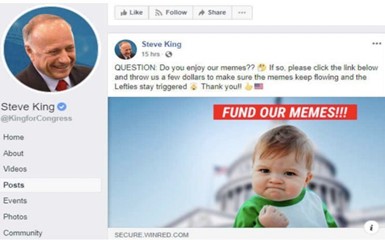The US Court of Appeals for the District of Columbia upheld a district court ruling that affirmed the US Copyright Office’s (CO) denial of a copyright application for artwork created by artificial intelligence (AI), reaffirming that human authorship is necessary for copyright registration. Thaler v. Perlmutter, Case No. 23-5233 (D.C. Cir. Mar. 18, 2025) (Millett, Wilkins, Rogers, JJ.)
Stephen Thaler, PhD, created a generative AI system that he named the Creativity Machine. The machine created a picture that Thaler titled, “A Recent Entrance to Paradise.” Thaler applied to the CO for copyright registration for the artwork, listing the Creativity Machine as the author and Thaler as the copyright owner.
The CO denied Thaler’s application because “a human being did not create the work.” Thaler twice sought reconsideration of the application, which the CO denied because the work lacked human authorship. Thaler subsequently sought review in the US District Court for the District of Columbia, which affirmed the CO’s denial of registration. The district court concluded that “[h]uman authorship is a bedrock requirement of copyright.” Thaler appealed.
The DC Circuit reaffirmed that the Creativity Machine could not be considered the author of a copyrighted work. The Copyright Act of 1976 mandates that to be eligible for copyright, a work must be initially authored by a human being. The Court highlighted key provisions of the Copyright Act that only make sense if “author” is interpreted as referring to a human being. For instance:
- A copyright is a property right that immediately vests in the author. Since AI cannot own property, it cannot hold copyright.
- Copyright protection lasts for the author’s lifetime, but machines do not have lifespans.
- Copyright is inheritable, but machines have no surviving spouses or heirs.
- Transferring a copyright requires a signature, and machines cannot provide signatures.
- Authors of unpublished works are protected regardless of their nationality or domicile, yet machines do not have a domicile or national identity.
- Authors have intentions, but machines lack consciousness and cannot form intentions.
The DC Circuit concluded that the statutory provisions, as a whole, make human activity a necessary condition for authorship under the Copyright Act.
The DC Circuit noted that the human authorship requirement is not new, referencing multiple judicial decisions, including those from the Seventh and Ninth Circuits, where appellate courts have consistently ruled that authors must be human.
Practice Note: Only humans, not their tools, can author copyrightable works of art. Images autonomously generated are not eligible for copyright. However, works created by humans who used AI are eligible for copyright depending on the circumstances, how the AI tool operates, and to what degree the AI tool was used to create the final work. Authors whose works are assisted by AI should seek advice of counsel to determine whether their works are copyrightable.
read more

 Subscribe
Subscribe




